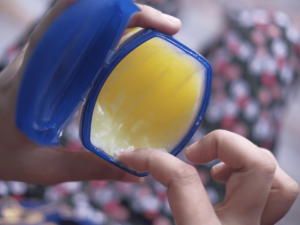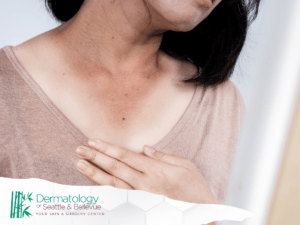Recovering from melanoma surgery is a journey that goes beyond physical healing. It’s a path that involves understanding, patience, and care.
Whether you or a loved one has recently undergone melanoma surgery, this guide, “Melanoma Surgery Recovery: What You Need to Know,” is designed to navigate the recovery process.
Melanoma, a severe form of skin cancer, often requires surgical intervention. The type of surgery can vary depending on the stage and location of the melanoma, ranging from simple excisions to more complex procedures. While the primary goal of surgery is to remove melanoma, what follows is equally important – the recovery phase.
Understanding the Healing Process Post-Melanoma Surgery
The journey to recovery following melanoma surgery is as unique as the individuals who undertake it. Understanding the healing process is crucial in managing expectations and facilitating a smooth recovery. This section delves into what you can expect during the post-melanoma surgery healing phase.
Immediate Post-Surgical Phase:
- First Few Days: Initially, you may experience discomfort, swelling, and redness around the surgery site. It’s normal to feel a range of emotions during this time.
- Wound Care: Proper care of the surgical area is critical. This may involve cleaning the wound, changing dressings, and applying any prescribed ointments. Your surgeon will provide specific instructions tailored to your surgery type.
The Healing Timeline:
- Short-term Recovery: You’ll likely notice gradual improvements over the first few weeks. Pain and swelling should decrease, and the surgical wound will begin to heal.
- Long-term Healing: Complete healing can take several months, particularly regarding scarring and skin texture. Scars may continue to evolve and improve over a year.
Physical Factors Influencing Healing:
- Type of Surgery: The extent of surgery (simple excision vs. more extensive procedures) affects the healing timeline.
- Personal Health: Factors like age, nutrition, overall health, and smoking status can impact the speed and quality of healing.
Psychological and Emotional Healing:
- Emotional Well-being: It’s common to experience various emotions, from relief to anxiety or sadness. Acknowledge these feelings and seek support if needed.
- Body Image: Adjusting to changes in appearance, especially if the surgery was on a visible area, can be a part of the recovery.
Understanding the healing process post-melanoma surgery involves recognizing both the physical and emotional aspects of recovery. Each person’s experience is different; patience with your body as it heals is crucial. Remember, your healthcare team supports you through every step of this journey.
Essential Care Tips for Post-Melanoma Surgery

After melanoma surgery, properly caring for yourself is crucial for a smooth and effective recovery. The postoperative period is not just about wound healing; it encompasses overall well-being. Here are some essential care tips to help you navigate the post-melanoma surgery period.
Wound Care:
- Follow the Surgeon’s Instructions: Adhere strictly to the wound care guidelines provided by your surgeon. This typically involves keeping the area clean, changing dressings as instructed, and applying prescribed medications.
- Avoid Infection: Be vigilant in preventing infection by practicing good hygiene and avoiding touching the wound unnecessarily.
Pain Management:
- Medication: Use pain relief medications as prescribed. If over-the-counter options are recommended, follow the dosage instructions.
- Natural Relief Methods: Sometimes, gentle methods like ice packs (if advised) or relaxation techniques can also help manage discomfort.
Physical Activity:
- Rest and Recovery: Give your body enough time to heal. Avoid strenuous activities and heavy lifting for the duration recommended by your healthcare provider.
- Gradual Resumption: Slowly return to your normal activities as per your doctor’s advice, listening to your body’s signals.
Diet and Hydration:
- Nutritious Foods: Focus on a balanced diet rich in vitamins, proteins, and minerals that aid healing.
- Stay Hydrated: Drinking plenty of water is essential for keeping your body hydrated and promoting better healing.
Sun Protection:
- Avoid Sun Exposure: Protect the healing skin from sun exposure, as it can worsen scarring and hinder healing.
- Use Sunscreen: Once the wound has sufficiently healed, apply a broad-spectrum sunscreen to protect against UV rays.
Monitoring Healing:
- Watch for Complications: Look for signs of infection or abnormal healing, and contact your healthcare provider if you have any concerns.
- Regular Check-ups: Keep all scheduled postoperative appointments for wound checks and progress evaluations.
Tips for Skin Care and Scar Minimization Post-Melanoma Surgery

After melanoma surgery, particularly when it’s performed on visible areas like the face or arms, patients often express concerns about scarring and skin care. Proper care can significantly minimize scarring and improve the overall appearance of your skin during the recovery process. Here are some effective tips for skin care and scar minimization post-melanoma surgery:
Gentle Skin Care Routine:
- Mild Cleaning: Use a gentle, fragrance-free cleanser to clean the area around the surgical site. Avoid scrubbing or rubbing the area harshly.
- Moisturizing: Once the wound has started to heal, keep the skin moisturized. Use hypoallergenic, non-irritating moisturizers to keep the skin supple and aid in healing.
Scar Minimization Techniques:
- Silicone Gel Sheets: These are often recommended by dermatologists for scar care. Silicone gel sheets can help flatten and soften scars and are particularly useful for larger or more prominent scars.
- Scar Massage: Gently massaging the scar once it’s sufficiently healed can help break down the scar tissue, making it less noticeable. Use a gentle, circular motion.
Sun Protection:
- Sun Avoidance: Keep the scar out of the sun. Sun exposure can darken scars, making them more noticeable.
- Use Sunscreen: Apply a broad-spectrum sunscreen with at least SPF 30 to the scar. This is crucial even on cloudy days and during winter months.
Topical Treatments:
- Vitamin E and Oils: While the research is mixed, some find that topical Vitamin E and certain oils can help in scar healing. Consult with your dermatologist before applying any of these.
- Medicated Creams: In some cases, your doctor might prescribe medicated creams that can aid in scar healing.
Stay Hydrated and Eat Well:
- Hydration: Drinking plenty of water helps maintain skin elasticity and can aid in the healing process.
- Nutritious Diet: A balanced diet rich in vitamins and minerals can promote skin healing and overall health.
Regular Monitoring:
- Keep an eye on the scar for any changes in size, shape, or color, and consult your dermatologist if you notice anything unusual.
Final Words:
It’s important to emphasize that recovery is a deeply personal and unique journey. Each step, from understanding the healing process to implementing essential care tips and making lifestyle adjustments, plays a crucial role in navigating this path.
And don’t hesitate to reach out to Dermatology of Seattle with any questions or concerns. We are your partners in this journey, providing support and guidance tailored to your specific needs.






